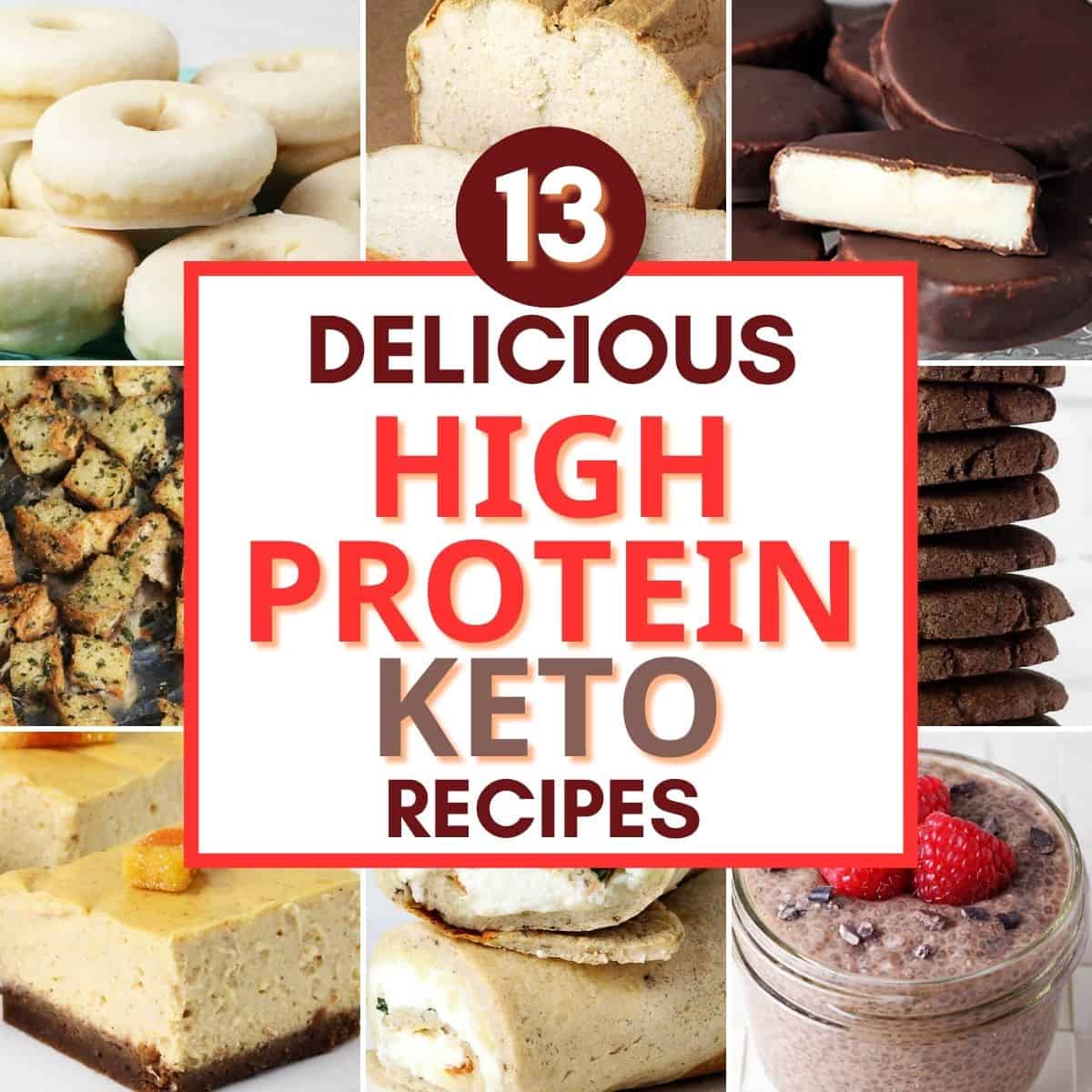Fuel your muscle recovery with the power of high-protein ketogenic recipes! This comprehensive guide delves into the science behind combining a ketogenic diet with high protein intake for optimal post-workout recovery. We’ll explore delicious, easy-to-make recipes featuring diverse protein sources, highlighting the crucial role of healthy fats and essential nutrients in muscle repair and reducing inflammation. Prepare to discover a game-changing approach to fueling your fitness journey.
Learn how to craft a personalized 7-day meal plan tailored to your needs, mastering efficient meal prepping techniques to minimize waste and maximize results. We’ll address common challenges faced by athletes on a high-protein keto diet, providing practical solutions and strategies to overcome hurdles such as electrolyte imbalances or digestive issues. Discover the secrets to building muscle mass, maintaining lean physique, and optimizing your performance, all while enjoying flavorful and satisfying keto meals.
High-Protein Keto Recipe Ideas for Post-Workout Recovery
Post-workout recovery is crucial for muscle growth and overall fitness. A high-protein ketogenic diet can significantly aid this process by providing the necessary building blocks for muscle repair and minimizing inflammation. These recipes focus on easily accessible ingredients and deliver a potent combination of protein and healthy fats to optimize your recovery.
High-Protein Keto Recipes for Muscle Recovery
The following recipes offer delicious and effective ways to replenish your body after intense physical activity. Each recipe is designed to provide a substantial amount of protein to support muscle protein synthesis, alongside healthy fats for satiety and hormone regulation.
| Recipe Name | Ingredients | Summary | Nutritional Info (per serving) |
|---|---|---|---|
| Keto Salmon with Asparagus and Avocado | 4oz Salmon fillet, 1 cup Asparagus spears, ½ Avocado, 2 tbsp Olive oil, Salt and pepper to taste | This recipe combines lean protein from salmon with healthy fats from avocado and olive oil, and fiber-rich asparagus for a balanced and satiating meal. | Protein: 30g, Fat: 35g, Carbs: 5g, Calories: 400 |
| Chicken and Broccoli Stir-fry with Coconut Aminos | 4oz Chicken breast (diced), 1 cup Broccoli florets, 1 tbsp Coconut aminos, 1 tbsp Coconut oil, ½ tbsp Sesame oil, Garlic powder, Onion powder | This quick and easy stir-fry provides a powerhouse of protein from chicken, along with the nutritional benefits of broccoli. Coconut aminos add flavor without excessive carbs. | Protein: 35g, Fat: 20g, Carbs: 5g, Calories: 350 |
| Keto Egg Omelet with Cheese and Spinach | 3 large Eggs, ½ cup Spinach, 1oz Cheddar cheese (shredded), 1 tbsp Butter, Salt and pepper to taste | A classic high-protein breakfast or post-workout meal, this omelet is packed with protein from eggs and healthy fats from cheese and butter. Spinach provides essential micronutrients. | Protein: 25g, Fat: 25g, Carbs: 2g, Calories: 300 |
Role of Ingredients in Muscle Repair and Inflammation Reduction
The ingredients in these recipes play specific roles in optimizing muscle recovery. The high protein content, primarily from salmon, chicken, and eggs, is essential for muscle protein synthesis, the process of building and repairing muscle tissue. Salmon, in particular, is rich in omega-3 fatty acids, which have anti-inflammatory properties, helping to reduce muscle soreness and inflammation after strenuous exercise. Avocado and olive oil provide healthy monounsaturated fats, vital for hormone production and overall cellular function. These fats also contribute to satiety, preventing overeating and maintaining a consistent energy supply for recovery. Broccoli, a cruciferous vegetable, is rich in antioxidants that combat oxidative stress, a byproduct of intense exercise. The combination of these nutrients ensures a comprehensive approach to post-workout recovery, supporting muscle repair and reducing inflammation.
Comparing Different Protein Sources in Keto Recipes

Choosing the right protein source is crucial for maximizing muscle recovery on a ketogenic diet. Different proteins offer varying amino acid profiles, digestibility rates, and overall nutritional benefits, impacting their effectiveness in supporting post-workout muscle repair and growth. This comparison examines three popular high-protein keto options: chicken breast, salmon, and tofu.
Chicken Breast: Nutritional Profile and Muscle Recovery
Chicken breast is a lean protein powerhouse, readily available and relatively inexpensive. Its nutritional profile boasts a high concentration of essential amino acids, particularly leucine, which is vital for muscle protein synthesis.
- Advantages: High in protein, low in fat (when skinless), readily available, affordable, versatile in cooking methods.
- Disadvantages: Can be dry if overcooked, relatively lower in omega-3 fatty acids compared to other options.
Recipe Example: Sheet Pan Lemon Herb Chicken and Asparagus. Roasting chicken breast at a moderate temperature (around 375°F or 190°C) ensures even cooking and prevents dryness. This method preserves the protein structure, facilitating efficient digestion and absorption. The lemon and herbs add flavor without impacting protein quality.
Salmon: Nutritional Profile and Muscle Recovery
Salmon stands out due to its exceptional omega-3 fatty acid content, alongside its substantial protein profile. Omega-3s possess anti-inflammatory properties, which can aid muscle recovery by reducing post-workout soreness and inflammation.
- Advantages: High in protein and healthy fats (omega-3s), rich in vitamins and minerals, anti-inflammatory benefits.
- Disadvantages: Can be more expensive than chicken breast, higher in fat than chicken breast (though healthy fats).
Recipe Example: Pan-Seared Salmon with Roasted Broccoli. Pan-searing salmon at a high temperature for a short time creates a flavorful crust while maintaining the salmon’s moist texture. This method minimizes protein degradation, ensuring optimal absorption. The quick cooking time also helps retain the omega-3 fatty acids.
Tofu: Nutritional Profile and Muscle Recovery
Tofu, a soy-based protein source, provides a complete protein profile, meaning it contains all nine essential amino acids. While not as high in protein per serving as chicken or salmon, it offers a valuable plant-based alternative.
- Advantages: Complete protein source, versatile in cooking, relatively low in calories and fat, good source of iron.
- Disadvantages: Can have a bland taste if not properly seasoned, can be less satiating than animal-based proteins, the digestibility can be affected by processing methods.
Recipe Example: Crispy Tofu Stir-fry with Shirataki Noodles. Pressing the tofu before cooking removes excess water, resulting in a firmer texture and improved digestibility. Stir-frying allows for quick cooking, preventing over-processing and preserving the protein’s nutritional value. The shirataki noodles provide a low-carb base for the meal.
High-Protein Keto Recipes for Different Fitness Goals
Achieving different fitness goals, whether it’s packing on muscle or shedding fat while preserving muscle mass, requires tailored nutritional strategies. High-protein ketogenic diets offer a powerful approach by providing the necessary building blocks for muscle growth while keeping you in a fat-burning state. These recipes demonstrate how to leverage this approach effectively.
Muscle-Building Keto Recipe: Keto Chicken and Broccoli Stir-Fry
This recipe focuses on lean protein and nutrient-dense vegetables to support muscle growth while adhering to ketogenic principles. The stir-fry method ensures quick cooking, preserving the nutrients and vibrant flavors of the ingredients.
- Preparation: Begin by cutting 1.5 lbs boneless, skinless chicken breast into bite-sized pieces. The raw chicken has a slightly pale, firm texture. Next, chop 2 cups of broccoli florets into small, even pieces. Their vibrant green color and firm texture will become slightly softer during cooking. Finely mince 2 cloves of garlic, releasing their pungent aroma.
- Stir-frying: Heat 1 tablespoon of avocado oil in a large wok or skillet over medium-high heat. The oil shimmers as it heats, and you can smell its subtle nutty aroma. Add the chicken and stir-fry for 5-7 minutes, until it is cooked through and slightly browned. The chicken will turn from pale to an opaque white with slightly golden-brown edges, and a savory aroma will fill the kitchen.
- Adding Vegetables and Seasoning: Add the broccoli and garlic to the wok. Stir-fry for another 3-5 minutes, until the broccoli is tender-crisp. The broccoli will retain its bright green color, but its texture will become slightly softer. Season with 1 teaspoon of sea salt, ½ teaspoon of black pepper, and ½ teaspoon of red pepper flakes (optional) for a spicy kick. The combined aromas of garlic, chicken, and broccoli create a savory and slightly spicy fragrance.
- Serving: Serve immediately. The stir-fry has a satisfying combination of textures, from the tender chicken to the slightly crunchy broccoli. The savory and slightly spicy flavors are balanced and delicious.
This recipe can be adapted for vegetarians by substituting the chicken with 1 cup of firm tofu, pan-fried until golden brown. For vegans, use tempeh instead of tofu.
Muscle-Maintaining, Fat-Loss Keto Recipe: Salmon with Asparagus and Cauliflower Mash
This recipe prioritizes healthy fats and lean protein to maintain muscle mass while promoting fat loss. The combination of salmon, asparagus, and cauliflower mash offers a balanced and flavorful keto meal.
- Preparation: Preheat your oven to 400°F (200°C). Prepare a 1 lb salmon fillet by patting it dry with paper towels. Its orange-pink flesh will gleam slightly. Trim 1 bunch of asparagus, snapping off the tough ends. The asparagus spears have a firm texture and a subtle grassy aroma. Steam or blanch the asparagus until tender-crisp. Steam 1 large head of cauliflower until soft. The cauliflower florets will soften and turn a slightly paler shade of white during steaming.
- Cooking the Salmon: Season the salmon fillet with salt, pepper, and a squeeze of lemon juice. The lemon juice adds a bright citrusy aroma and enhances the salmon’s flavor. Place the salmon on a baking sheet lined with parchment paper and bake for 12-15 minutes, or until it flakes easily with a fork. The salmon will turn opaque white and have a slightly firm yet flaky texture. A rich, savory aroma will emanate from the oven.
- Making the Cauliflower Mash: While the salmon bakes, mash the steamed cauliflower with 2 tablespoons of heavy cream and a pinch of salt and pepper. The heavy cream adds richness and creaminess to the mash. The resulting mash has a smooth, creamy texture and a subtle cauliflower flavor.
- Serving: Serve the baked salmon with the steamed asparagus and cauliflower mash. The combination of the flaky salmon, tender asparagus, and creamy cauliflower mash offers a delightful balance of textures and flavors.
This recipe can be easily adapted to suit various dietary preferences. For example, those with shellfish allergies could substitute the salmon with another lean protein source, like cod or halibut. Individuals who prefer a richer flavor can add herbs like dill or thyme to the salmon and cauliflower mash.
Mastering the art of high-protein ketogenic cooking for muscle recovery isn’t just about following recipes; it’s about understanding the synergistic power of healthy fats, quality protein, and strategic meal timing. This guide equips you with the knowledge and practical tools to fuel your body effectively, accelerating your recovery, and boosting your overall fitness performance. Embrace the transformative potential of this dietary approach, and experience the difference firsthand as you achieve your fitness goals with renewed energy and strength.
Detailed FAQs
Can I follow a high-protein keto diet if I’m vegetarian or vegan?
Yes, but it requires careful planning. Focus on plant-based protein sources like tofu, tempeh, legumes (in moderation), and nuts/seeds. Ensure you consume sufficient healthy fats to maintain ketosis.
How much protein should I consume on a high-protein keto diet for muscle recovery?
The ideal protein intake varies based on individual factors like body weight, activity level, and fitness goals. Consult a registered dietitian or sports nutritionist for personalized recommendations. A general guideline is 1.6-2.2 grams of protein per kilogram of body weight.
What are the signs of ketosis, and how can I monitor my progress?
Common signs include reduced appetite, increased energy, improved mental clarity, and weight loss. You can monitor ketosis using urine ketone strips or blood ketone meters. However, these aren’t always accurate indicators, and feeling good is a better gauge of your progress.
Are there any potential downsides to a high-protein keto diet?
Potential downsides include digestive issues (constipation), electrolyte imbalances (especially sodium and potassium), and potential nutrient deficiencies if not carefully planned. Hydration is crucial, and consulting a healthcare professional is recommended.


